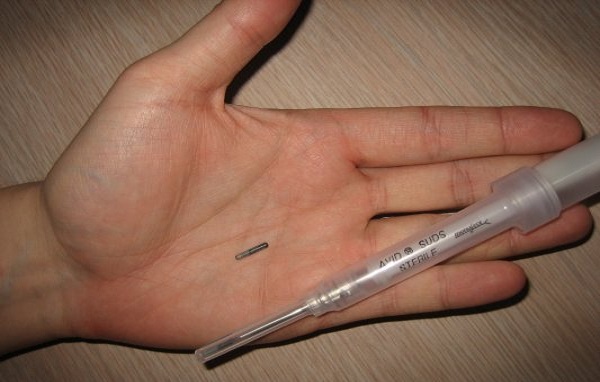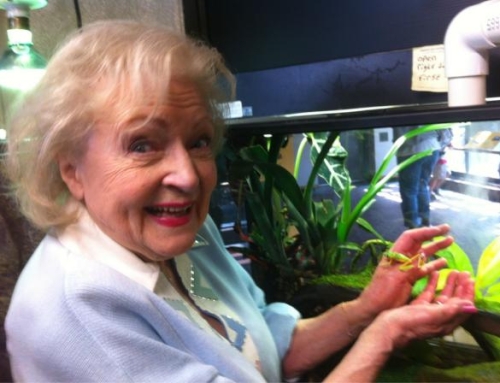In 2010, the Australian government announced it was working on a radio frequency identification (RFID) microchipping plan for the country’s health system. Around the same time, predictions surfaced stating by the year 2017, all Americans would be microchipped. Now it seems Australia may beat the United States in its efforts. The Australian push is not a result of mandatory health care reforms; instead, it is a self-seeking campaign that compares RFID microchipping to superhuman powers with Australians begging for it.
It may sound like a movie, but hundreds of Australians have turned into “super-humans” who can log into computers, turn on lights, and unlock doors with a wave of the hand. One woman from Sydney, Shanti Korporaal, is front and center of this phenomenon with two implants inserted beneath the skin of her hands. The RFID chip has allowed Korporaal to access her car and employment office without the need for keys or a card. Now, she says, the ultimate goal is to be ![Australia Becomes First Country to Microchip Citizens [Video] microchip](http://guardianlv.com/wp-content/uploads/2016/10/micro-chip-2.jpg)
Pet owners have long utilized these devices, but experts remain divided on whether they are appropriate for humans. However, they agree the implants could offer several advantages. Microchips can easily be injected under the skin and go unnoticed until necessary. Upon passing through a security checkpoint or entering a stadium, the RFID signals would transmit one’s identity. Additionally, the chip could serve for purchasing groceries, be the difference between life and death for soldiers and journalists in war zones, or when locating a kidnapped child.
The microchips, which are the size of a grain of rice, can hold complex medical data, transfer contact details to smartphones and act like a business card. Thousands already use microchips to activate the gas pump from a key ring and for anti-theft devices in cars. Many others welcome pacemakers and additional embedded devices that have become commonplace today. Stu Lipoff, a representative for the Institute of Electrical and Electronics Engineers, said:
There is something strange about injecting a chip in your body. People might find it a bit unsavory, but if it is not used to track you, and apart from the privacy issues, there are many interesting applications.
Australia becomes the first to microchip citizens, but reportedly, America is not far behind. In 2005, Amal Graafstra became one of the first and is now the most well-known “do-it-yourself” ![Australia Becomes First Country to Microchip Citizens [Video] microchip](http://guardianlv.com/wp-content/uploads/2016/10/mirco-chip-2.jpg)
Korporaal, the 27-year-old Australian, along with her husband Skeeve Stevens, has established a distribution service called Chip My Life. The new business venture allows others to become “super-humans” for a fee ranging from $80 to $140. The couple has bought into the dominating culture of society, which includes a fantasy of superheroes that mesmerize the population at theaters all across the globe. Shanti said:
Ever since watching movies like the Terminator, Matrix, and Minority Report I wondered if we could actually live like that. I always wondered why we all were not living as super-humans.
At least two U.S. citizens have also bought into the dream with implanted NFC chips into their fingers. Tim Shanks and Krissy Heishman are using the device to control things such as smartphones and key cards at work. At this time, the implants are not being done in a U.S. doctor’s office; however, Dangerous Things, Graafstra’s online company, sells the device along with an injection kit for $57. In several parts of the country, tattoo and piercing shops are performing the procedure. Ryan Mills of Skin Art Gallery in Texas said:
We are doing the procedure from start to finish, just like we would do an earring, nose ring or a belly button ring. It is just a little piece of glass.
Is the human body a fit place for a microchip? The debate is no longer figurative. The same power that once required the likes of an entire building to connect can now be inserted into human hands. Australia becomes the first country to microchip citizens with the super-human capabilities with America, reportedly, not too far behind.
By Cherese Jackson (Virginia)
Sources:
Choice and Truth: Australia Becomes First Country To Begin Microchipping Its Public
Amal Graafstr: Adventures in RFID
CNN: Is human chip implant wave of the future?
Wired: They Want Their ID Chips Now
Photo Credits:
First Inline Image Courtesy of Jonas Lönborg – Flickr License
All Other Images Used With Permission (Amal Graafstr / Dangerous Things)







